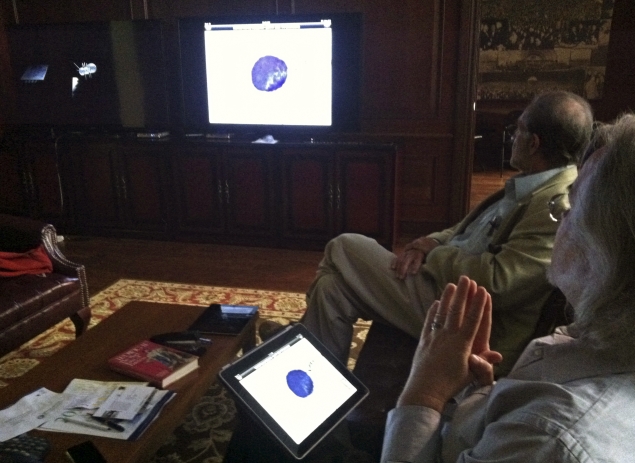- Home
- Science
- Science News
- 3D Brain View May Help Treat Disorders Like Alzheimer's, Parkison's
3D Brain View May Help Treat Disorders Like Alzheimer's, Parkison's

This receptor allows us to learn and remember, and its dysfunction can result in a wide range of neurological diseases including Alzheimer's, Parkinson's, schizophrenia and depression.
The unprecedented view gives scientists new insight into how the receptor - called the NMDA receptor - is structured.
And importantly, the new detailed view gives vital clues for developing drugs to combat neurological diseases and conditions.
"This is the most exciting moment of my career," said Eric Gouaux, a senior scientist with Oregon Health and Science University in the US.
"The NMDA receptor is one of the most essential, and still sometimes mysterious, receptors in our brain. Now, with this work, we can see it in fascinating detail," he said.
Receptors facilitate chemical and electrical signals between neurons in the brain allowing them to communicate with each other.
The NMDA (N-methyl-D-aspartate) receptor facilitates neuron communication that is the foundation of memory, learning and thought.
Malfunction of the NMDA receptor occurs when it is increasingly or decreasingly active.
The NMDA receptor makeup includes receptor "subunits" - all of which have distinct properties and act in distinct ways in the brain, sometimes causing neurological problems.
Prior to Gouaux's study, scientists had only a limited view of how those subtypes were arranged in the NMDA receptor complex and how they interacted to carry out specific functions within the brain and the central nervous system.
Gouaux's team of scientists created a 3D model of the NMDA receptor through a process called X-ray crystallography.
"This new detailed view will be invaluable as we try to develop drugs that might work on specific subunits and therefore help fight or cure some of these neurological diseases and conditions," Gouaux said.
"Seeing the structure in more detail can unlock some of its secrets and may help a lot of people," he added.
The findings were published online in the journal Nature.
Catch the latest from the Consumer Electronics Show on Gadgets 360, at our CES 2026 hub.
Related Stories
- Samsung Galaxy Unpacked 2025
- ChatGPT
- Redmi Note 14 Pro+
- iPhone 16
- Apple Vision Pro
- Oneplus 12
- OnePlus Nord CE 3 Lite 5G
- iPhone 13
- Xiaomi 14 Pro
- Oppo Find N3
- Tecno Spark Go (2023)
- Realme V30
- Best Phones Under 25000
- Samsung Galaxy S24 Series
- Cryptocurrency
- iQoo 12
- Samsung Galaxy S24 Ultra
- Giottus
- Samsung Galaxy Z Flip 5
- Apple 'Scary Fast'
- Housefull 5
- GoPro Hero 12 Black Review
- Invincible Season 2
- JioGlass
- HD Ready TV
- Laptop Under 50000
- Smartwatch Under 10000
- Latest Mobile Phones
- Compare Phones
- Tecno Spark Go 3
- iQOO Z11 Turbo
- OPPO A6c
- Samsung Galaxy A07 5G
- Vivo Y500i
- OnePlus Turbo 6V
- OnePlus Turbo 6
- Itel Zeno 20 Max
- Lenovo Yoga Slim 7x (2025)
- Lenovo Yoga Slim 7a
- Lenovo Idea Tab Plus
- Realme Pad 3
- Garmin Quatix 8 Pro
- NoiseFit Pro 6R
- Haier H5E Series
- Acerpure Nitro Z Series 100-inch QLED TV
- Asus ROG Ally
- Nintendo Switch Lite
- Haier 1.6 Ton 5 Star Inverter Split AC (HSU19G-MZAID5BN-INV)
- Haier 1.6 Ton 5 Star Inverter Split AC (HSU19G-MZAIM5BN-INV)

















